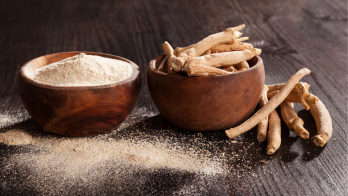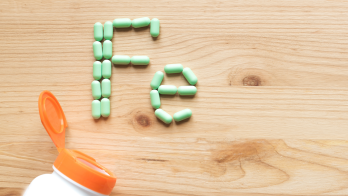5 nutrition tactics for how to lose fat and gain muscle
Whether you're a weekend warrior or a professional athlete, optimizing your body composition can do wonders for your health. But how do you know which nutrition approach is best to help you achieve your goals? From protein to IF, here are 5 nutrition tactics for how to lose fat and gain muscle.
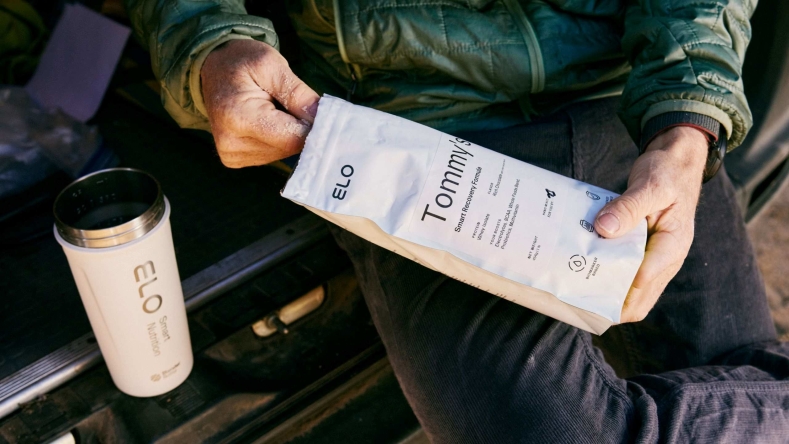
Whether you’re looking to reach a new PR or enhance your overall health, experts continue to show that building and maintaining muscle mass is one of the best ways to reach your goals. However, amidst the sea of conflicting information and trendy diets, finding a sustainable approach can feel overwhelming. So, how can you separate fact from fiction to find what actually works?
In this article, we are diving into the science to determine the best nutrition tactics for how to lose fat and gain muscle. But before we get started, let’s first understand what body composition is and why it’s important for health.

Understanding body composition
Whether you’re looking to improve your health span or boost your quality of life, there are many reasons why body composition matters. Let’s take a closer look at how body fat and muscle mass contribute to your overall health.
Body fat
Adipose tissue (or body fat) is a connective tissue that is found under the skin, between internal organs, and in bone marrow. It serves as an energy store, insulator, and active organ in the endocrine system. Adipose tissue is comprised of nerve cells and blood vessels, and communicates through hormone signals with other organs, playing a crucial role in overall health [ 1
While we need a certain amount of body fat to survive, excess body fat has been shown to contribute to health problems, such as type 2 diabetes, high blood pressure, heart disease, stroke, some cancers, metabolic syndrome, osteoarthritis, and more [ 2
What is muscle mass?
By definition, muscle mass refers to the size of your muscles and how much you have in your body. These muscles are integral for a diverse amount of bodily functions, such as facilitating movement and maintaining posture [ 3 here
Muscle mass is a vital component for overall health and wellness, as it plays a crucial role in enhancing functional strength and overall quality of life. It also helps with body composition, reduces the likelihood of chronic diseases, aids in mobility and balance, and fosters independence in day-to-day activities, especially as you age. Furthermore, studies have also found that muscle mass may help prevent injury, increase bone density, boost metabolic rate, and help maintain overall mental well-being and cognitive function [ 4 5 6 7
Learn more about how to build lean muscle in this article
5 nutrition tactics for how to lose fat and gain muscle
Science indicates that you can improve your health (and body composition) by what you put on your plate. Here are 5 nutrition tactics for how to lose fat and gain muscle.
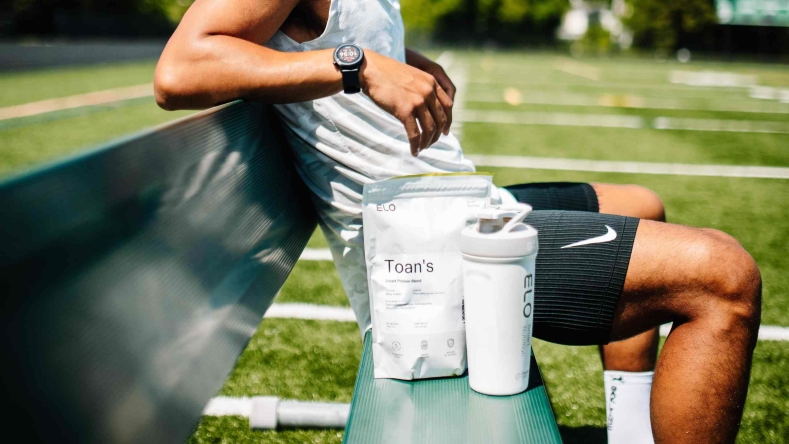
#1: Prioritize protein
Protein is an essential macronutrient that plays a vital role in strength, lean muscle mass, post-workout recovery, and satiety [ 8 9
Numerous studies continue to show that consuming a high protein diet can boost metabolism, assist in weight loss, and improve body composition, since it decreases fat mass while preserving fat-free mass [ 10 11
Conversely, research suggests that a protein deficiency may lead to muscle atrophy, impaired muscle growth or regrowth, and functional decline [ 12
Dosing recommendations
The current RDA is 0.8 g/kg/day for all adults over 18 years of age [ 13 14
If you are an athlete or highly active individual, research shows that you may need 1.2-2.0 g/kg of body weight/day, depending on training needs and goals [ 15 16
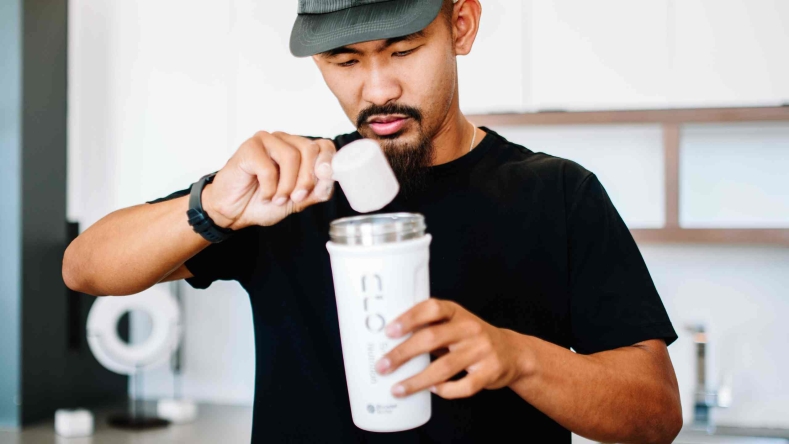
Give Smart Protein a try
While you can get protein through numerous dietary sources (like lean meat, tofu, beans, and Greek yogurt), protein powders are a popular supplement for those looking to increase their protein intake. Elo Smart Protein
Elo Smart Protein is also backed by the latest science to help you recover faster and get the most out of every scoop of protein powder. Try it out for yourself today!
#2: Eat healthy fats
Research continues to show that consuming healthy fats (like omega-3 acids, monounsaturated fats and polyunsaturated fats) benefit your heart, as they help increase HDL “good” cholesterol LDL “bad” cholesterol
While these healthy fats play a crucial role in heart health, cellular growth, inflammatory markers, and energy levels, emerging evidence shows that an increase in muscle mass could also improve the ratio of HDL to LDL [ 17 18 19
Some dietary sources of healthy fats include vegetable oils (like olive oil and canola oil), avocados, nuts, eggs, and fatty fish such as salmon, herring, sardines and trout.
Dosing recommendations
While the amount of fat you need per day can vary, experts recommend that fat should make up 20 - 35% of your total calories [ 20
#3: Be mindful of calories
Watching your caloric intake plays a crucial role in achieving a balance between burning fat and preserving muscle. If you’re looking to shed excess body fat, creating a caloric deficit will prompt your body to utilize stored fat as an energy source. However, it's crucial to strike the right balance, as an extremely low calorie intake can cause fatigue, nutritional deficiencies, and even muscle loss.
If you choose to create a calorie deficiency to help shed excess fat, it’s crucial to eat enough protein and do both endurance and resistance exercises to preserve muscle mass and enhance strength [ 21
Talk with a dietitian or healthcare provider to learn more about the right caloric intake for you.

#4: Get more vitamin D
Often referred to as the “sunshine vitamin”, vitamin D is an essential nutrient that is vital for calcium absorption and immune function, as well as bone and heart health [ 22 23
Furthermore, emerging research has found a connection between vitamin D deficiency and weight, suggesting that excess body fat may prevent vitamin D absorption [ 24 25 26
However, further studies are needed before more definitive solutions can be determined.
Dosing recommendations
For vitamin D, the recommended daily allowance for men and women 19-70 years old is 600 - 800 IU, but some evidence suggests that 2,000+ IU may be beneficial for certain people [ 22
While your body can synthesize vitamin D from the sun, you can also obtain it in foods like mushrooms, cod liver oil, fortified foods, sardines, and eggs, or in supplements like Elo Smart Gummies
#5: Consider intermittent fasting
Intermittent fasting 27
Studies also suggest that fasting may enhance the secretion of growth hormone (which can be beneficial for both fat loss and muscle gain), as well as regenerate new cells and produce metabolic changes to switch from burning glucose to fatty acids [ 28 29
Summary
Experts continue to show that building muscle and reducing fat mass can have a dramatic impact on your health, athletic performance, and mobility. While physical activity certainly plays a role in your body composition, science suggests that what you put on your plate can also make a difference. By focusing on protein, getting enough healthy fats, optimizing vitamin D levels, being mindful of your caloric intake, and experimenting with intermittent fasting, you can enhance your health, reduce fat, and improve muscle.
Disclaimer: The text, images, videos, and other media on this page are provided for informational purposes only and are not intended to treat, diagnose or replace personalized medical care.
Key takeaways
While we need a certain amount of body fat to survive, excess body fat has been shown to contribute to a variety of health problems.
Muscle mass is a vital component for health and wellness, as it plays a crucial role in enhancing functional strength and overall quality of life.
Protein is an essential macronutrient that plays a vital role in strength, lean muscle mass, post-workout recovery, and satiety. You can find protein in certain dietary sources or with supplements like
Elo Smart Protein
.Eating healthy fats, improving vitamin D levels, being mindful of caloric intake, and doing intermittent fasting have all been shown to improve body composition.
References
professional, C. C. medical. (n.d.). Adipose tissue (body fat): Anatomy & function. Cleveland Clinic.
https://my.clevelandclinic.org/health/body/24052-adipose-tissue-body-fat
U.S. Department of Health and Human Services. (n.d.). Health risks of Overweight & obesity - niddk. National Institute of Diabetes and Digestive and Kidney Diseases.
https://www.niddk.nih.gov/health-information/weight-management/adult-overweight-obesity/health-risks
Frontera, W. R., & Ochala, J. (2014). Skeletal muscle: A brief review of structure and function. Calcified Tissue International, 96(3), 183–195.
https://doi.org/10.1007/s00223-014-9915-y
McPherron, A. C., Guo, T., Bond, N. D., & Gavrilova, O. (2013). Increasing muscle mass to improve metabolism. Adipocyte, 2(2), 92–98.
https://doi.org/10.4161/adip.22500
Suchomel, T. J., Nimphius, S., & Stone, M. H. (2016). The Importance of Muscular Strength in Athletic Performance. Sports medicine (Auckland, N.Z.), 46(10), 1419–1449.
https://doi.org/10.1007/s40279-016-0486-0
Sutter, T., Toumi, H., Valery, A., El Hage, R., Pinti, A., & Lespessailles, E. (2019). Relationships between muscle mass, strength and regional bone mineral density in young men. PloS one, 14(3), e0213681.
https://doi.org/10.1371/journal.pone.0213681
Sui, S. X., Williams, L. J., Holloway-Kew, K. L., Hyde, N. K., Leach, S., & Pasco, J. A. (2022). Associations Between Muscle Quality and Cognitive Function in Older Men: Cross-Sectional Data From the Geelong Osteoporosis Study. Journal of clinical densitometry : the official journal of the International Society for Clinical Densitometry, 25(2), 133–140.
https://doi.org/10.1016/j.jocd.2021.03.007
Carbone, J. W., & Pasiakos, S. M. (2019). Dietary Protein and Muscle Mass: Translating Science to Application and Health Benefit. Nutrients, 11(5), 1136.
https://doi.org/10.3390/nu11051136
Morell, P., & Fiszman, S. (2017). Revisiting the role of protein-induced satiation and satiety. Food Hydrocolloids, 68, 199–210.
https://doi.org/10.1016/j.foodhyd.2016.08.003
Evans, E. M., Mojtahedi, M. C., Thorpe, M. P., Valentine, R. J., Kris-Etherton, P. M., & Layman, D. K. (2012). Effects of protein intake and gender on body composition changes: a randomized clinical weight loss trial. Nutrition & metabolism, 9(1), 55.
https://doi.org/10.1186/1743-7075-9-55
Moon, J., & Koh, G. (2020). Clinical Evidence and Mechanisms of High-Protein Diet-Induced Weight Loss. Journal of obesity & metabolic syndrome, 29(3), 166–173.
https://doi.org/10.7570/jomes20028
Thalacker-Mercer, A., Riddle, E., & Barre, L. (2020). Protein and amino acids for skeletal muscle health in aging. Advances in food and nutrition research, 91, 29–64.
https://doi.org/10.1016/bs.afnr.2019.08.002
Baum, J. I., Kim, I. Y., & Wolfe, R. R. (2016). Protein Consumption and the Elderly: What Is the Optimal Level of Intake?. Nutrients, 8(6), 359.
https://doi.org/10.3390/nu8060359
Bauer, J., Biolo, G., Cederholm, T., Cesari, M., Cruz-Jentoft, A. J., Morley, J. E., Phillips, S., Sieber, C., Stehle, P., Teta, D., Visvanathan, R., Volpi, E., & Boirie, Y. (2013). Evidence-based recommendations for optimal dietary protein intake in older people: A position paper from the Prot-Age Study Group. Journal of the American Medical Directors Association, 14(8), 542–559.
https://doi.org/10.1016/j.jamda.2013.05.021
Carbone, J. W., & Pasiakos, S. M. (2019). Dietary protein and muscle mass: Translating science to application and Health Benefit. Nutrients, 11(5), 1136.
https://doi.org/10.3390/nu11051136
Protein intake for optimal muscle maintenance - ACSM. (n.d.).
https://www.acsm.org/docs/default-source/files-for-resource-library/protein-intake-for-optimal-muscle-maintenance.pdf?sfvrsn=688d8896_2
Know the facts about Fats. Harvard Health. (2021, April 19).
https://www.health.harvard.edu/staying-healthy/know-the-facts-about-fats
Skeletal muscle mass is associated with HDL cholesterol levels and the ratio of LDL to HDL cholesterol in young men: A pilot study. (2022). Journal of Men’s Health, 18(8), 1.
https://doi.org/10.31083/j.jomh1808171
Petre, A. (2017, September 12). Can omega-3 fish oil help you lose weight?. Healthline.
https://www.healthline.com/nutrition/omega-3-fish-oil-and-weight-loss
4 keys to strength building and Muscle Mass. Academy of Nutrition and Dietetics: eatright.org. (n.d.).
https://www.eatright.org/fitness/physical-activity/benefits-of-exercise/4-keys-to-strength-building-and-muscle-mass
Cava, E., Yeat, N. C., & Mittendorfer, B. (2017). Preserving Healthy Muscle during Weight Loss. Advances in nutrition (Bethesda, Md.), 8(3), 511–519.
https://doi.org/10.3945/an.116.014506
U.S. Department of Health and Human Services. (n.d.). Office of dietary supplements - vitamin D. NIH Office of Dietary Supplements.
https://ods.od.nih.gov/factsheets/VitaminD-HealthProfessional/
Gordon, P. L., Sakkas, G. K., Doyle, J. W., Shubert, T., & Johansen, K. L. (2007). Relationship between vitamin D and muscle size and strength in patients on hemodialysis. Journal of renal nutrition : the official journal of the Council on Renal Nutrition of the National Kidney Foundation, 17(6), 397–407.
https://doi.org/10.1053/j.jrn.2007.06.001
Vranić, L., Mikolašević, I., & Milić, S. (2019). Vitamin D Deficiency: Consequence or Cause of Obesity?. Medicina (Kaunas, Lithuania), 55(9), 541.
https://doi.org/10.3390/medicina55090541
Glinski, S., Andrews, L., Salomon, S. H., Lawler, M., Barrie, L., Cassata, C., & Mastroianni, B. (n.d.). Can taking a vitamin D supplement help you lose weight?. EverydayHealth.com.
https://www.everydayhealth.com/vitamin-d/can-taking-a-vitamin-d-supplement-help-you-lose-weight/
Perna S. (2019). Is Vitamin D Supplementation Useful for Weight Loss Programs? A Systematic Review and Meta-Analysis of Randomized Controlled Trials. Medicina, 55(7), 368.
https://doi.org/10.3390/medicina55070368
Vasim, I., Majeed, C. N., & DeBoer, M. D. (2022). Intermittent Fasting and Metabolic Health. Nutrients, 14(3), 631.
https://doi.org/10.3390/nu14030631
Ho, K. Y., Veldhuis, J. D., Johnson, M. L., Furlanetto, R., Evans, W. S., Alberti, K. G., & Thorner, M. O. (1988). Fasting enhances growth hormone secretion and amplifies the complex rhythms of growth hormone secretion in man. Journal of Clinical Investigation, 81(4), 968–975.
https://doi.org/10.1172/jci113450
Longo, V. D., Di Tano, M., Mattson, M. P., & Guidi, N. (2021). Intermittent and periodic fasting, longevity and disease. Nature Aging, 1(1), 47–59.
https://doi.org/10.1038/s43587-020-00013-3



